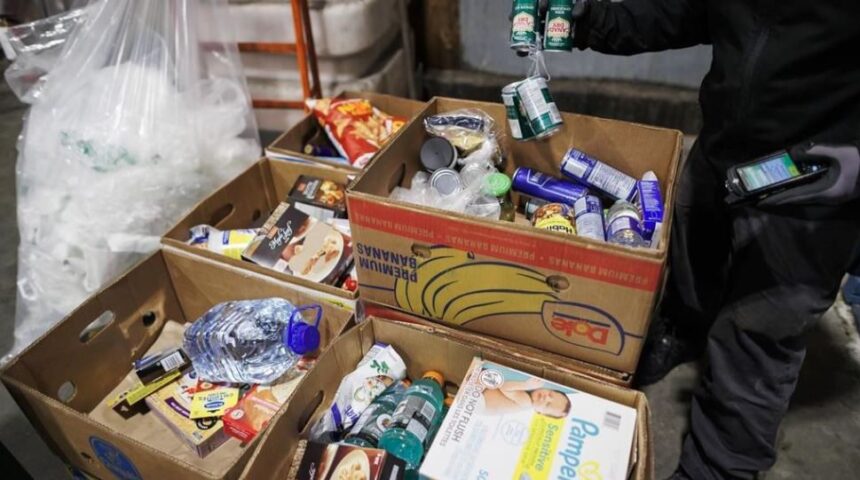As I linger in a small diner just off Agricola Street in Halifax’s North End, the morning rush reveals a social rhythm that statistics often miss. A young mother counts change at the counter, deciding between a full breakfast for her child or coffee for herself.
“It’s better now than last year, but I still have to choose,” she tells me, tucking her wallet away. “The food bank helps, but you can’t build a life around emergency services.”
Nova Scotia might be experiencing the lowest food price inflation in Canada—2.3% compared to the national average of 3.7%, according to June Statistics Canada data—but this mathematical victory isn’t translating to fewer empty plates across the province.
Feed Nova Scotia reports that food bank visits have increased by 17% in the first half of 2025 compared to the same period last year. Their quarterly assessment indicates that nearly one in six Nova Scotian households now experiences some form of food insecurity, with rural areas showing particularly troubling trends.
“Lower inflation doesn’t help much when wages haven’t caught up with the price surge we saw in 2022 and 2023,” explains Dr. Sylvia Morgan, food security researcher at Dalhousie University. “We’re seeing better numbers on paper, but household budgets haven’t recovered.”
The phenomenon creates what policy experts call the “affordability gap”—where slowing inflation provides statistical comfort while failing to address accumulated financial strain on households. Premier Tim Houston acknowledged this disconnect during last month’s provincial economic forum.
“We recognize that statistical improvements don’t automatically translate to kitchen tables,” Houston said. “That’s why we’re expanding the Food Security Action Plan with an additional $8.3 million this fiscal year.”
The provincial initiative aims to strengthen community food networks and provide targeted relief to households spending more than 30% of their income on food. However, community advocates question whether these measures address structural issues.
Around Yarmouth and in Cape Breton communities, where transportation costs add another layer to food accessibility challenges, the situation remains particularly difficult. Grocery stores in Sydney report that shoppers increasingly bypass fresh produce sections for cheaper processed alternatives.
“When you’ve got limited dollars, you buy what fills bellies,” says Marcus Townsend, who manages a mid-sized grocery store in Sydney. “I watch people make these impossible choices every day, and it breaks my heart.”
The provincial situation reflects broader national patterns, though with distinct regional characteristics. While British Columbia and Ontario struggle with housing costs creating pressure on food budgets, Nova Scotia’s challenges stem from lower average incomes combined with transportation barriers in rural communities.
Statistics Canada’s Consumer Price Index shows that while meat prices have stabilized somewhat nationally, dairy and fresh produce costs continue to outpace wage growth across Atlantic Canada. For households already stretching every dollar, these ongoing pressures mean difficult nutritional compromises.
“We’re seeing a nutrition gap forming,” warns Dr. Aisha Patel of the Nova Scotia Nutrition Council. “Families maintain caloric intake but sacrifice nutritional quality—more carbohydrates, fewer proteins and fresh vegetables. This creates long-term health concerns that will eventually strain our healthcare system.”
Community responses have evolved beyond traditional food banks. The South Shore Food Cooperative has expanded its “Grow-a-Row” program, connecting local farmers with distribution networks to provide fresh produce to vulnerable households. Their initiative has delivered over 75,000 pounds of fresh vegetables to communities this growing season.
“We’re trying to address quality, not just quantity,” explains Cooperative director Jennifer MacLeod. “Food security isn’t just about having something to eat—it’s about nutrition, dignity, and sustainable access.”
Federal MP Karen Williams, representing a Halifax riding, points to structural economic factors. “Nova Scotia has made progress on affordable housing compared to other provinces, but our wage structure remains problematic,” she noted during a recent community forum. “When nearly 40% of your workforce earns less than $20 per hour, food insecurity is inevitable regardless of inflation rates.”
The province’s minimum wage increased to $15.80 in April, but inflation has eroded much of this gain. Economic analysis from the Canadian Centre for Policy Alternatives suggests that a living wage in Halifax now requires approximately $24.50 per hour—a gap that explains why many fully employed Nova Scotians still struggle with food security.
Food prices tell only part of the story. When I visit the Fairview Community Food Centre on a Tuesday afternoon, I meet retired teacher Elaine MacDonald, who now volunteers after facing her own food challenges.
“My pension seemed adequate when I retired in 2018, but it hasn’t kept pace,” she explains while organizing donated items. “I never imagined I’d need food support after teaching for 32 years, but here we are. At least helping others gives purpose to my situation.”
The centre reports that seniors represent their fastest-growing demographic—up 28% since 2023. This trend aligns with nationwide patterns of fixed-income Canadians facing unprecedented affordability challenges.
Provincial Social Development Minister James Carmichael announced last week that the government is exploring a seniors’ grocery subsidy program modeled after successful initiatives in Quebec. The proposal would provide qualifying seniors with $75 monthly grocery cards beginning in January 2026.
“We need to acknowledge that statistical improvements don’t automatically translate to everyday life,” Carmichael stated. “Targeted interventions are necessary while we work toward broader economic solutions.”
As Nova Scotia navigates this complex landscape of improving economic indicators alongside persistent food insecurity, the path forward requires more than statistical victories. It demands a rethinking of how we measure economic success and what constitutes meaningful progress for vulnerable communities.
When I return to that North End diner weeks later, the young mother is there again. This time, both she and her daughter enjoy a full breakfast. Small victories exist alongside ongoing challenges—a fitting metaphor for Nova Scotia’s current relationship with food security.






